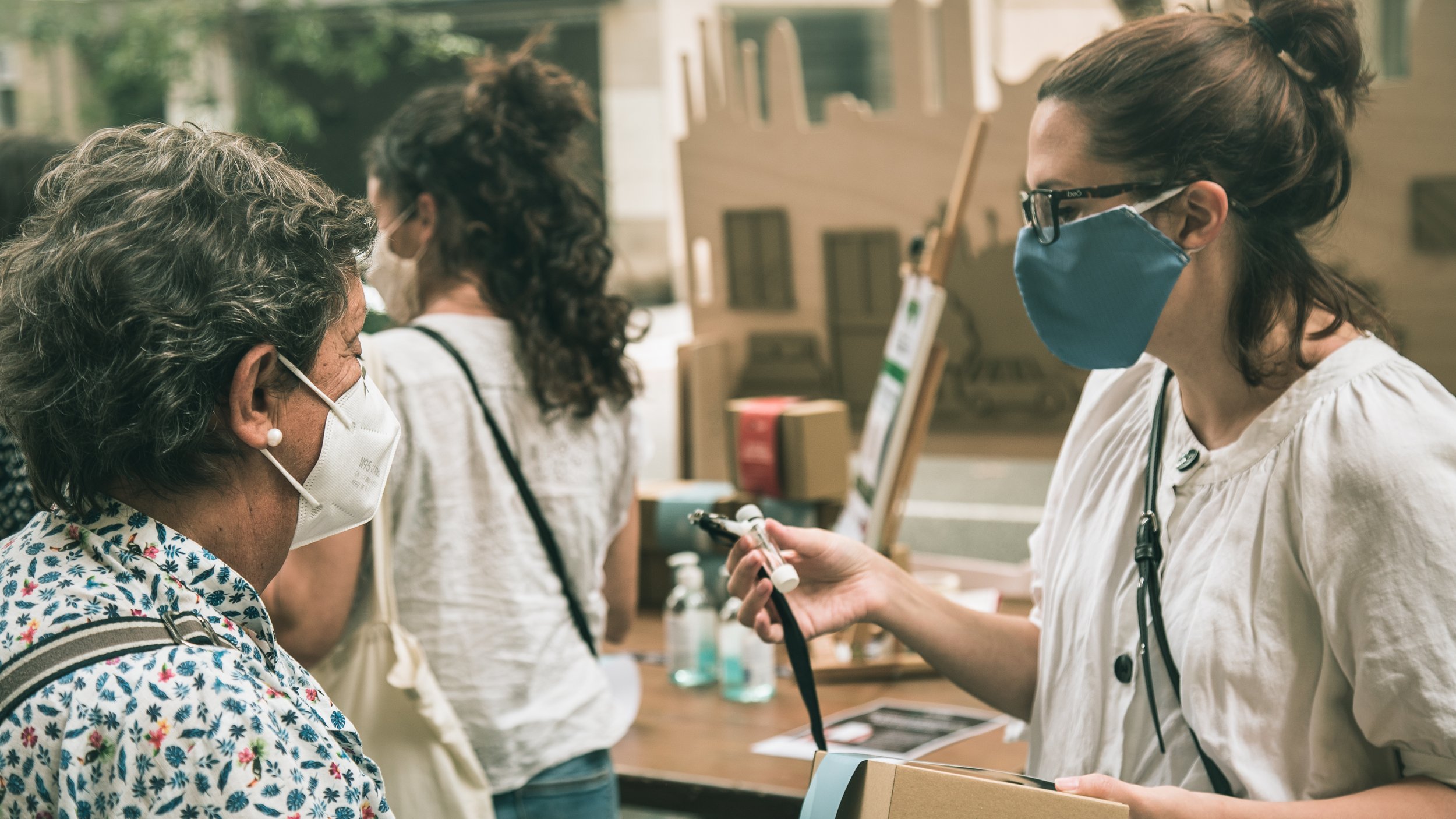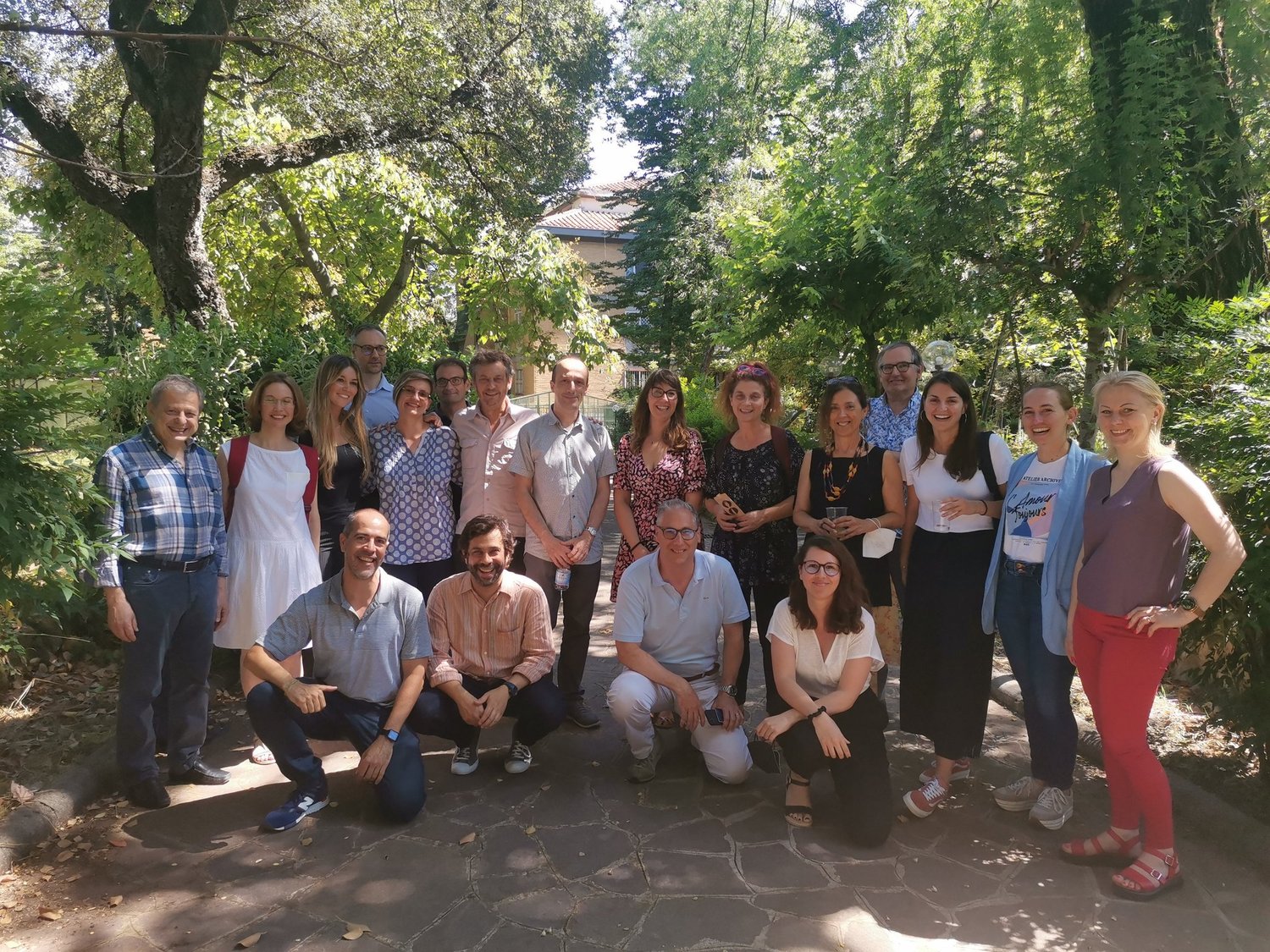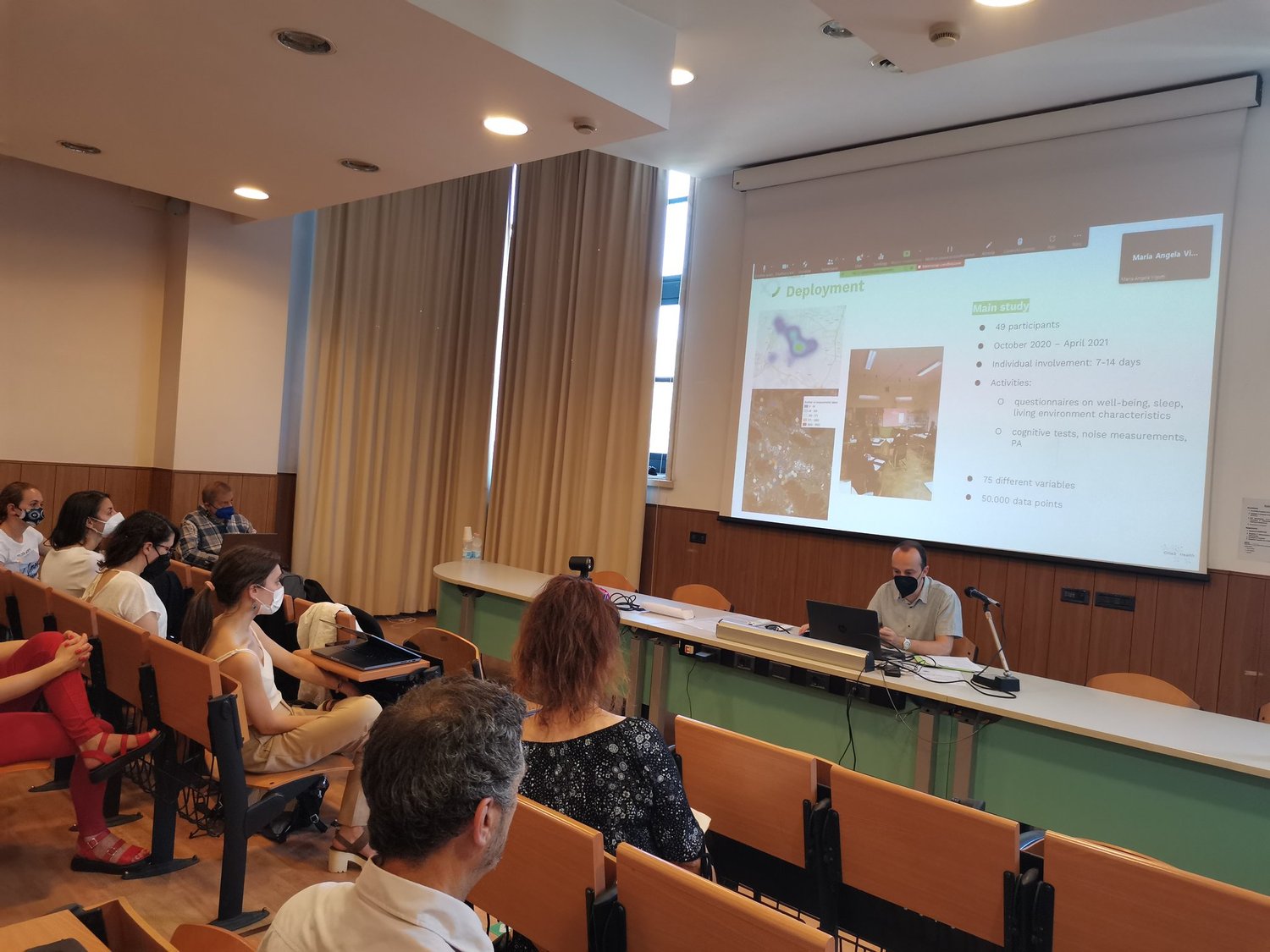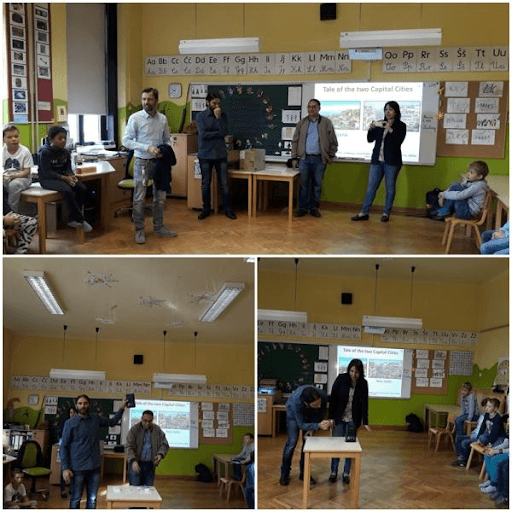Scientific research
Scientific research
The transformative impact of citizen science projects
The transformative impact of citizen science projects
19 de julio de 2022


By Javi Creus, founder and director of strategy at Ideas for Change. (Original publication in English)
What happens when citizen science projects come to an end? A complicated question with many answers. The data collected can be found on open platforms, the results are shared with the scientific community, and citizens strengthen their relationship with science. But, what is really the impact of these projects?


A month ago, we celebrated the final event of the CitieS-Health project in Rome. It was a special occasion to exchange with policymakers the scope of the experiment and how citizens can step up and take the initiative in an environmental epidemiology study. Specifically, communities participated and collected data on air pollution and health in five pilots:
Barcelona: Measuring how air pollution affects mental health. Participants co-designed the study and collected data on their cognitive performance and mental health using NO2 tubes and tests.
Amsterdam: The short-term effect of wood smoke on respiratory health. Citizens created a study protocol and collected information about the experiment through their mobile phones and static measurements in their homes.
Kaunas: How urban design and physical activity affect the health and well-being of citizens. Communities wanted to investigate why the residents of their district suffer more from hypertension than in other neighborhoods. To do this, they used sensor watches that helped them track their physical activity, distance traveled, heart rate, and sleep quality, among other measurements.
Lucca: Collecting evidence of how pollutants from the Serchio Valley (Tuscany) increase rates of kidney diseases. By involving local authorities and citizens with DIY sensors, participants were able to monitor the concentration of fine and breathable particles in the valley.
Ljubljana: Analyzing how the quality of the living environment (with an emphasis on noise) and lifestyle habits affect mental health and well-being. The pilot carried out a series of activities to engage citizens and students in the project using sensors, testing apps, and participatory activities.
After three years of intense work, the results were published and disseminated to the entire scientific and social community. However, we will analyze the real impact on the system of each pilot.
A strengthened relationship between citizens and researchers: The case of Barcelona
The pilot demonstrated that there is a relationship between air pollution and mental health and that proximity to a green or blue space in your daily life can help alleviate the problem. Despite this, air pollution in cities is a fact, and the study served as another complement to this body of evidence.
However, the experiment made citizens feel more confident in speaking and contacting the scientific community. Communities realized that they can be part of a research study while contributing to the improvement of their quality of life by collecting scientific data and collaborating.
Involvement of stakeholders responsible for the problem: The case of Amsterdam
Once again, the impact in this case lies in the creation of a closer relationship between wood burners, policymakers, and citizens. Although the ban on burning wood has not taken place (yet), the issue has acquired a social dimension.

Changing habits to improve quality of life: The case of Kaunas
In this case, the pilot increased citizens' awareness of the practice of physical activity. Citizens who participated in the experience learned about the variables and changed their habits to lead a healthier daily life.
Raising a previously unconsidered problem: The case of Lucca
The Italian pilot project demonstrated that pollutants from heavy metals are related to the increase of renal dysfunction in the Serchio Valley. By creating a committee of citizens that conducted a scientific activity, communities participated in an entire study process and were able to speak with researchers and elders about the issue.

Reaching out to authorities to incorporate the results: The case of Ljubljana
Finally, on an individual level, the demonstration site allowed for behavioral changes. Before the project, citizens were not aware of the amount of noise in their lives and how it affected them, so they began to avoid it. On the other hand, the direct result of the trial was the stimulation of conversations with local government representatives to take action.
The transformative effect of citizen science
As a general conclusion, we can state that the CitieS-Health project pilots demonstrated the transformative effects of Citizen Science in at least three key dimensions:
Problem: raising, socializing, supporting
The effect varies depending on the problem
The Lucca pilot managed to raise a problem -soil contamination- that had been overlooked for many years by residents and factory workers, who until then had focused more on service provision and working conditions.
The Amsterdam pilot managed to give a social dimension to wood burning, which until then was considered a personal nuisance among neighbors -like noise- and not a general polluting factor.
The Barcelona pilot addressed issues of atmospheric pollution that had already been documented in the city and that had already acquired a social dimension, thus constituting an increase in social awareness.
Participants: organization, personal changes, awareness
Citizen science as a process of transformation for citizens
Participants in the Lucca pilot organized as a community with the aim of researching further and demanding action from authorities.
Young participants in the Kaunas pilot changed their exercise habits as a result of learning that their cardiovascular health depended not only on environmental factors but also on their own behavior.
Participants from Ljubljana became aware of the effect of environmental conditions on their health and became critical observers of their living conditions.
3. Institutional participation: commitment, interest, recognition
Science transforms societies
Regional authorities from the Lucca pilot committed to act before the results of the same and agreed on what actions should be taken based on the study's findings.
The Ministry of Health of the Netherlands became interested in the pilot project because it supported its own view that wood burning is not a personal behavior but a social health problem.
Local authorities in Barcelona recognized the results of the pilot and added its findings to the body of evidence supporting their ongoing action to reduce air pollution in the city and promote active and healthy mobility.
By Javi Creus, founder and director of strategy at Ideas for Change. (Original publication in English)
What happens when citizen science projects come to an end? A complicated question with many answers. The data collected can be found on open platforms, the results are shared with the scientific community, and citizens strengthen their relationship with science. But, what is really the impact of these projects?


A month ago, we celebrated the final event of the CitieS-Health project in Rome. It was a special occasion to exchange with policymakers the scope of the experiment and how citizens can step up and take the initiative in an environmental epidemiology study. Specifically, communities participated and collected data on air pollution and health in five pilots:
Barcelona: Measuring how air pollution affects mental health. Participants co-designed the study and collected data on their cognitive performance and mental health using NO2 tubes and tests.
Amsterdam: The short-term effect of wood smoke on respiratory health. Citizens created a study protocol and collected information about the experiment through their mobile phones and static measurements in their homes.
Kaunas: How urban design and physical activity affect the health and well-being of citizens. Communities wanted to investigate why the residents of their district suffer more from hypertension than in other neighborhoods. To do this, they used sensor watches that helped them track their physical activity, distance traveled, heart rate, and sleep quality, among other measurements.
Lucca: Collecting evidence of how pollutants from the Serchio Valley (Tuscany) increase rates of kidney diseases. By involving local authorities and citizens with DIY sensors, participants were able to monitor the concentration of fine and breathable particles in the valley.
Ljubljana: Analyzing how the quality of the living environment (with an emphasis on noise) and lifestyle habits affect mental health and well-being. The pilot carried out a series of activities to engage citizens and students in the project using sensors, testing apps, and participatory activities.
After three years of intense work, the results were published and disseminated to the entire scientific and social community. However, we will analyze the real impact on the system of each pilot.
A strengthened relationship between citizens and researchers: The case of Barcelona
The pilot demonstrated that there is a relationship between air pollution and mental health and that proximity to a green or blue space in your daily life can help alleviate the problem. Despite this, air pollution in cities is a fact, and the study served as another complement to this body of evidence.
However, the experiment made citizens feel more confident in speaking and contacting the scientific community. Communities realized that they can be part of a research study while contributing to the improvement of their quality of life by collecting scientific data and collaborating.
Involvement of stakeholders responsible for the problem: The case of Amsterdam
Once again, the impact in this case lies in the creation of a closer relationship between wood burners, policymakers, and citizens. Although the ban on burning wood has not taken place (yet), the issue has acquired a social dimension.

Changing habits to improve quality of life: The case of Kaunas
In this case, the pilot increased citizens' awareness of the practice of physical activity. Citizens who participated in the experience learned about the variables and changed their habits to lead a healthier daily life.
Raising a previously unconsidered problem: The case of Lucca
The Italian pilot project demonstrated that pollutants from heavy metals are related to the increase of renal dysfunction in the Serchio Valley. By creating a committee of citizens that conducted a scientific activity, communities participated in an entire study process and were able to speak with researchers and elders about the issue.

Reaching out to authorities to incorporate the results: The case of Ljubljana
Finally, on an individual level, the demonstration site allowed for behavioral changes. Before the project, citizens were not aware of the amount of noise in their lives and how it affected them, so they began to avoid it. On the other hand, the direct result of the trial was the stimulation of conversations with local government representatives to take action.
The transformative effect of citizen science
As a general conclusion, we can state that the CitieS-Health project pilots demonstrated the transformative effects of Citizen Science in at least three key dimensions:
Problem: raising, socializing, supporting
The effect varies depending on the problem
The Lucca pilot managed to raise a problem -soil contamination- that had been overlooked for many years by residents and factory workers, who until then had focused more on service provision and working conditions.
The Amsterdam pilot managed to give a social dimension to wood burning, which until then was considered a personal nuisance among neighbors -like noise- and not a general polluting factor.
The Barcelona pilot addressed issues of atmospheric pollution that had already been documented in the city and that had already acquired a social dimension, thus constituting an increase in social awareness.
Participants: organization, personal changes, awareness
Citizen science as a process of transformation for citizens
Participants in the Lucca pilot organized as a community with the aim of researching further and demanding action from authorities.
Young participants in the Kaunas pilot changed their exercise habits as a result of learning that their cardiovascular health depended not only on environmental factors but also on their own behavior.
Participants from Ljubljana became aware of the effect of environmental conditions on their health and became critical observers of their living conditions.
3. Institutional participation: commitment, interest, recognition
Science transforms societies
Regional authorities from the Lucca pilot committed to act before the results of the same and agreed on what actions should be taken based on the study's findings.
The Ministry of Health of the Netherlands became interested in the pilot project because it supported its own view that wood burning is not a personal behavior but a social health problem.
Local authorities in Barcelona recognized the results of the pilot and added its findings to the body of evidence supporting their ongoing action to reduce air pollution in the city and promote active and healthy mobility.


